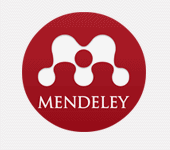NETWORK OF THE MIDDLE EAST NUSANTARA ULAMA (20th Century To 21st Century)
Abstract
Full Text:
PDFReferences
DAFTAR PUSTAKA
Afifudin, E. (2012). Metodeologi Penelitian Kualitatif . Bandung: Pustaka Setia.
Akhbar, A. (2018). Nikah Mutah di Mata Hamka. Yogyakarta: Semesta Aksara.
Alfian, M. (2019). Pemikiran Pendidikan Islam Buya HAMKA,” Islamika . Jurnal Ilmu-Ilmu Keislaman, 89–98.
Asari, H. (2020). Menyikap Zaman Keemasan Islam. Medan: Cita Pustaka.
Asnawan, U. d. (2018). KH. Abdul Wahid Hasyim pembaru pesantren,. Jurnal Penelitian Pendidikan Islam, 431–454.
Azra, A. (2013). Jaringan Ulama Timur Tengah & Kepulauan Nusantara Abad XVII & XVIII, Akar Pembaruan Islam Indonesia . Depok: Prenadamedia Group.
Burhanudin, J. (2021). Ulama & Kekuasaan Pergumulan Elite Muslim Dalam Sejarah Indonesia. Jakarta: Mizan.
Fearly, G. (1998). Ijtihad Politik Ulama, Sejarah NU 1952-1967. Yogyakarta: LKiS.
Hamka. (1974). Kenang-Kenangan Hidup, Jilid IV . Jakarta: Bulan Bintang.
Hamka. (1979). Kenang-kenangan Hidup, Jilid, I Cet IV. Jakarta: Bulan Bintang.
Muhammad Syahripin, Candra Wijaya, S. N. (2021). Principal Planning Management in Increasing Teacher Work Productivity. International Journal of Islamic Education, Research and Multiculturalism (IJIERM), 3(3), 184–187.
Rusydi. (1983). Pribadi dan Martabat Buya Prof. DR. Hamka . Jakarta: Pustaka Panjimas.
Sanusi, A. (2016). Metodologi Penelitian Bisnis. Jakarta: Salemba Empat.
Shela Andri Mauliddina, D. A. (2022). “Pemahaman Pendidikan menurut Buya Hamka dengan Mengimplementasikan Lambang Bangsa Indonesia. Aulad: Journal on Early Childhood, 5.1, 61–71.
Sujarweni, V. W. (2014). Metodeologi Penelitian . Yogyakarta: Pustaka Baru Perss.
Sukardi. (2013). Metodologi Penelitian Pendidikan Kompetensi dan Praktiknya . Jakarata: PT Bumi Aksara.
Sukmadinata. (2005). Metode Penelitian Pendidikan. Jakarta: Remaja Rosdakarya.
Shafa, R., Lubis, L., & Wijaya, C. (2021). Construction of climate of social affection in realizing the noble morals of youth (Phenomenology study in Medan Johor Kota Medan district). International Journal of Islamic Education, Research and Multiculturalism (IJIERM), 3(2), 93–119.
Tamara, N. (1996). Hamka di Mata Hati Umat. Jakarta: Pustaka Sinar Harapan.
Tohet, M. (2017). Pemikiran Pendidikan Islam Kh. Abdurrahman Wahid Dan Implikasinya Bagi Pengembangan Pendidikan Islam Di Indonesia,. Jurnal Pendidikan Agama Islam, Edureligia, Vol. 1, No. 2, Juli – Desember ,, 178-179.
Yunus, M. (2008). Sejarah Pendidikan Islam di Indonesia,. Jakarta: Hidayah Karya Agung.
Yusuf, Y. ( 2004). Corak Pemikiran Kalam Tafsir Al-Azhar; Sebuah Telaah atas Pemikiran Hamka dalam Teologi Islam, Cet III . Jakarta: Penamadan.
DOI: http://dx.doi.org/10.47006/attazakki.v6i2.13461
Refbacks
- There are currently no refbacks.
=====================================================================
Alamat Redaksi
At-Tazakki: Jurnal Kajian Ilmu Pendidikan Islam dan Humaniora
Program Studi Pendidikan Islam
Pascasarjana UIN Sumatera Utara
Jl. IAIN No. 1 Medan



